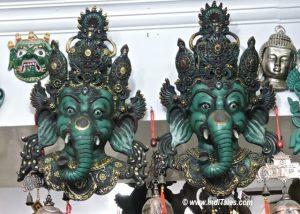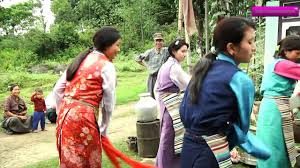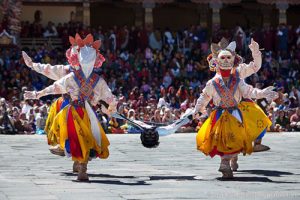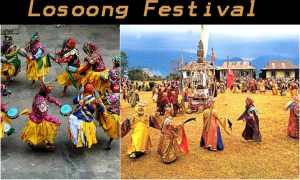Workers Peasant and Tribal Movements in Sikkim
The Anti-dam Movement in Sikkim: Resurgence of Lepcha and Bhutia Identity at Helm
- Sikkim is a small Himalayan State which is located in India’s north -east region.
- Prior to its merger with India in 1975, Sikkim was under the Chogyal Dynasty formed in 1642 under the influence of Tibetan theocracy.
- Today, it is primarily constituted by the Lepchas, Bhutias and the Nepalese ethnic group.
- It also consists of people from the places like Bihar, Bengal, Haryana, Rajasthan, Uttar Pradesh and other places of India who are generally referred as “plainsmen” who migrated during the 1890s.
- In recent years Sikkim has witnessed a boom in terms of number of hydel power projects being build here to an extent that it is almost close in acquiring the title for having highest dam density in the world.

- This was part of the 50,000 MW Hydroelectric initiative launched by the Prime Minister of India in May, 2003.
- But, the construction of power projects did not go all without opposition.
- The resistance has come primarily from the Lepcha and Bhutia community in Sikkim in three distinct phases.
- Though initially legitimized basing religion and culture, the movement as it progressed has been successful in revealing information and realities which may well serve in understanding and furthering the studies in development communication.
Resurgence of Bhutia and Lepcha Identity
- One of the notable consequences of the anti-hydel protests in Sikkim over the years is it has bestowed the reassertion of Lepcha and Bhutia identity in Sikkim.
- One peculiar character of all the anti-hydel protests in Sikkim is that all are primarily led and supported by the Lepcha and Bhutia community in Sikkim, thought there are some exceptions in the ongoing protest.
- Sikkim is primarily constituted by the Lepchas, Bhutias and the Nepalese ethnic group.
- It also consists of people from the places like Bihar, Bengal, Haryana, Rajasthan, Uttar Pradesh and other places of India who are generally referred as “plainsmen” who migrated during the 1890s.
- Historically, the degree of social distance and discrimination among diverse ethnic groups was very strong, particularly between the Lepcha- Bhutia and Nepali community.
- Ethnicity played a vital role during the formation of political parties in Sikkim, beginning from 1940’s. Political parties were chiefly constituted on ethnic lines.
- They were many reasons contributing to these social gaps.
- Initially, when the Chogyal regime recognised the status of the Subjects of Sikkim under Sikkim Subject Regulation 1961, the Nepalese who formed about 70 per cent of population in Sikkim and the plainsmen were excluded.
- Earliest Nepalese settlers were later recognized and granted Sikkimese status, though the plainsmen had always been excluded.
- For such reasons, there has always been hostility and differences among these ethnic groups. This hostility is primarily over the limited resource management in Sikkim.
- The case of anti-hydel protest in Sikkim is an overt signal of such hostility.
- However, over the years, particularly after the joining of Sikkim with the Indian Union in 1975, the antagonism between these ethnic groups to an extent was abbreviating, through various cross-cultural interactions, until the abrupt and haphazard endorsement of manifold hydro power plants in recent years.
- This has propelled the Lepchas and the Bhutias to protest the construction of dams under various banners simultaneously is once again resuscitating and widening the waning differences between these ethnic groups.
Helen Lepcha Alias Sabitri Devi: Lone Freedom Fighter from the Lepcha Tribe
- Helen Lepcha alias Sabitri Devi was one of the most famous Freedom fighters from the hills of Darjeeling and Sikkim.
- Originally a resident of Kurseong town she traces her lineage to a small hamlet in the village of Sangmoo near Namchi in South Sikkim.
- She is the only woman freedom fighter born in the state of Sikkim and even though she spent most of her life in hills of Darjeeling; Sikkim has come forward to name her as the daughter of their soil.
- In the event of Major Durga Malla and Captain Ram Singh Thakuri taking precedence among the freedom fighters from Darjeeling hills, Smt. Sabitri Devi has been given due recognition in her birth state of Sikkim.
- Born into a Lepcha family of Achung Lepcha, she was the third daughter among seven.
- It is said she was born around 1902 and soon after her family moved from Sangmoo village to Kurseong.
- Even today stand the Chorten she paid maintenance for annually and the pear tree she fondly remembered from her childhood in her homestead.
Sikkim: Ethnic struggle
- Almost all issues in Sikkim originate from and end in its ethnic diversity.
- Lepchas, the original inhabitants are today facing extinction; the Bhutias who ruled after them are also in a minority.
- Nepalis, who immigrated in large numbers in the late 19th and the early 20th centuries, are now in an overwhelming majority and are clamouring for their right to rule.
- Adding to the confusion is a large number of plainsmen, identified as “of Indian origin”. The tension and bitterness created by the ethnic struggle have cut across party lines.
- The Central and state governments are committed to the abolition of the present “parity system” under which Lepchas and Bhutias who constitute only 20 per cent of the population have 15 seats reserved in the 32-member Assembly.
- Nepalis – in 1975, of 133,000 voters 98,000 were Nepalis – also have a similar number of seats. This was done under a formula devised by the Chogyal to keep Nepali power in check. Nepalis find this regulation stifling under it since they cannot hope to dominate Sikkim’s politics.
- Citizenship Problems: Sikkim will probably be the first region in the recent past, where the most debated issues in the elections will pertain to those of the elections itself.
- After the merger of Sikkim with India, the Indian Government granted citizenship to all Sikkimese subjects listed by the former Chogyal’s administration.
- But Nepalis who came to Sikkim after 1961 -when the Sikkim Subject Regulation came into force-were not made Sikkim subjects and hence were missed out in the Indian list as well. Ironically, the political movement of 1973 which had dethroned the Chogyal, Palden Thondup Namgyal, had the active backing of thousands of such Nepalis.
- They are said to number about 50,000 and Nepali politicians are working hard for their inclusion on the election rolls.
- Incongruity: An equally unfortunate case is that of people of Indian origin in Sikkim, who are estimated to number about 60,000. In the normal course, when a person changes his place of residence from one state to another no restriction is placed on his right to contest an election from his new state.
- But in Sikkim, people of Indian origin-some have been staying since very long-who form over 20 per cent of the population are foreigners in their own country and do not retain the right to contest elections
 ng, are taught till the secondary school level.
ng, are taught till the secondary school level.


